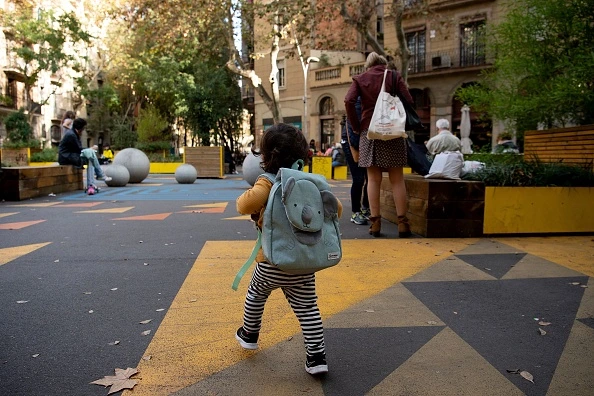
Throughout history, cities have evolved to meet the changing needs of society. Initially built to connect people and foster social interactions, cities later adapted to accommodate the rise of automobiles, leading to sprawling infrastructure and car-centric planning.

However, as urban-planner envision the car-free cities of the future, they are reassessing priorities to design spaces that prioritise people again and sustainability anew.
Return to people-centric design
Future cities will likely prioritise human connectivity again, ensuring that people are at the heart of urban planning. Walkable neighbourhoods will be a key feature, encouraging residents to explore their surroundings on foot. For example, Barcelona’s ‘superblocks’ concept reimagines the city grid by creating pedestrian-friendly zones with reduced traffic, allowing people to reclaim streets as communal spaces.
Designers are also looking more at mixed-use developments that integrate residential, commercial and recreational spaces. These compact, multipurpose spaces can foster a sense of community. The Vauban neighbourhood in Freiburg, Germany, exemplifies this concept, with a mix of housing, shops, schools and green spaces, all within walking distance.
Sustainable transportation
The cities of the future will emphasise sustainable transportation solutions to reduce reliance on cars and mitigate environmental impact. Electric vehicles (EVs) will become more prevalent, supported by a comprehensive charging infrastructure network. Additionally, efficient and affordable public transportation systems will be integrated. An example is Oslo, Norway, which aims to become a car-free city centre by prioritising public transport, cycling infrastructure and pedestrian zones.
Smart technology integration
Singapore’s smart city initiatives demonstrate the potential for integrated technology, with sensors monitoring traffic patterns, parking availability, and energy consumption to enhance urban efficiency. Other future cities will harness the power of technology to create smarter, more efficient urban environments. Intelligent transportation systems, including traffic management and optimised public transit, will improve mobility and reduce congestion.
Green, resilient and adaptable infrastructure
Cities must embrace green infrastructure to combat climate change and improve residents’ well-being. Rooftop gardens, vertical forests and green roofs can enhance air quality, reduce the urban heat island effect, and provide spaces for recreation. Examples include the Bosco Verticale in Milan, Italy, featuring high-rise buildings covered in greenery, and the High Line in New York City, which transformed an elevated railway into a linear park.
In addition, future cities should be designed with resilience in mind to further withstand the impacts of climate change and natural disasters. Sustainable building materials, flood-resistant infrastructure, and adaptive urban design will become integral components. The Dutch city of Rotterdam showcases its commitment to resilience by implementing floating houses, water plazas, and green roofs to address the challenges of rising sea levels and increased rainfall.
These are just a few examples of how, with forward-thinking from around the world, urban designers and governments can shape a future where cities are more in harmony with the people and the natural world.
[Read more: Where are the most sustainable cities in the world?]






